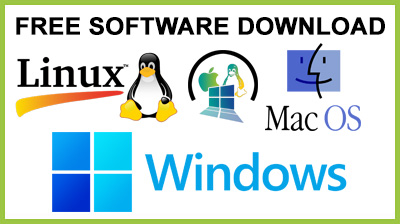
Microsoft .NET Framework 4.7.2 / 4.8 Early Access Build 3734
Microsoft .NET Framework : Microsoft's programming infrastructure for developing and launching Windows apps that use .NET technologies, geared toward both programmers and casual usersProprietary of Microsoft, .NET Framework is a free programming infrastructure that some developers resort to when creating Windows-oriented applications and services using .NET technologies.
Programming infrastructure for developers
It's basically a large package that already has all the necessary code with libraries, classes and templates needed by programmers to seamlessly put together desktop apps and web services by simply calling the code, instead of having to write everything from scratch. The package contains three major components: Common Language Runtime (CLR), Framework Class Library (FCL), and ASP.NET.Three major components: CLR, FCL and ASP.NET
CLR is the runtime environment, which means that it handles the execution of .NET apps, enabling programmers to develop projects using a language compiler, featuring cross-language integration and exception handling, enhanced support for security, versioning and deployment, along with a simple model for component integration, debugging and profiling services. At the moment, these are the CLR versions available: 1.0, 1.1, 2.0, 3.0, 3.5, 4 and 4.5 (includes 4.5.1 and 4.5.2). There's also a 4.6 RC version available.FCL comprises the numerous classes, services, interfaces and namespaces provided by .NET Framework. Apart from the runtime core functions (e.g. file and network I/O), it supports database interaction, XML usage and development, client-oriented apps for the desktop and Internet, along with SOAP-based XML web services.ASP.NET is the popular open-source service-side framework that programmers use to create dynamic web pages, apps and services with HTML, CSS, JavaScript, and any other type of code supported by the .NET language.Necessary for installing .NET Framework-based applications
.NET Framework addresses not only developers, but also regular users who want to be able to launch a tool written in .NET Framework. Typically, the infrastructure has to be manually downloaded by users. However, it sometimes comes bundled with various software packages, and some versions are built into Windows, so they only need to be enabled. For example, .NET Framework 3.5.1 is integrated into Windows 7, while .NET Framework 2.0, 3.0, 3.5 and 4.5 are rolled with Windows 8.Different .NET Framework versions
Worth mentioning is that the version number of a framework shouldn't be understood as a simple "update" number. For instance, older applications require older .NET Framework editions to work, and users should keep in mind these are not automatically implemented in newer versions. To be more specific, you can have multiple .NET Framework versions installed on your PC to run multiple apps with different requirements. Figuring out what version you already have installed can be tricky, but you can resort to several apps to help you in this regard, such as Speccy Portable.Disadvantages for non-developers
There are several known facts when it comes to the downsides of .NET Framework for casual users. For example, it occupies a significant amount of disk space, the installation step is lengthy, the utility usually hogs system resources, and older editions sometimes become unstable and frequently crash. Although this method doesn't always work (sadly), the last mentioned issue can be typically fixed by reinstalling .NET Framework. This can also be a problematic step because it's tricky to completely eliminate all leftovers (try using .NET Framework Cleanup Tool).Overall, a must-have framework for some Microsoft apps
To conclude, .NET Framework can be viewed as a love-it-or-hate-it platform: it can easily become a solution for developers who fully understand how to work with it, as well as a burden for casual users who frequently run into all sorts of issues. Regardless of what the case may be, .NET Framework is (usually) indispensable for Microsoft users.NOTE: You can also download .NET Framework 2 / 2.0 /1.1 or .NET Framework 3.5.Conclusion
To conclude Microsoft .NET Framework works on Windows operating system(s) and can be easily downloaded using the below download link according to Freeware license. Microsoft .NET Framework download file is only 68.3 MB in size.Microsoft .NET Framework was filed under the General category and was reviewed in softlookup.com and receive 5/5 Score.
Microsoft .NET Framework has been tested by our team against viruses, spyware, adware, trojan, backdoors and was found to be 100% clean. We will recheck Microsoft .NET Framework when updated to assure that it remains clean.
Microsoft .NET Framework user Review
Please review Microsoft .NET Framework application and submit your comments below. We will collect all comments in an effort to determine whether the Microsoft .NET Framework software is reliable, perform as expected and deliver the promised features and functionalities.Popularity 10/10 - Downloads - 36 - Score - 5/5
Softlookup.com 2023 - Privacy Policy
| Category: | General |
| Publisher: | Microsoft |
| Last Updated: | 12/11/2023 |
| Requirements: | Windows Server 2016 / Windows 10 64 bit / Windows 10 / Windows Server 2012 / Windows 2008 R2 / Windows 2008 64 bit / Windows 2008 / Windows 8 64 bit / Windows 8 / Windows 7 64 bit / Windows 7 / Windows Vista 64 bit / Windows Vista / Windows XP 64 bit |
| License: | Freeware |
| Operating system: | Windows |
| Hits: | 712 |
| File size: | 68.3 MB |
| Price: | Not specified |
| Name: * |
E-Mail: * |
| Comment: * |
|